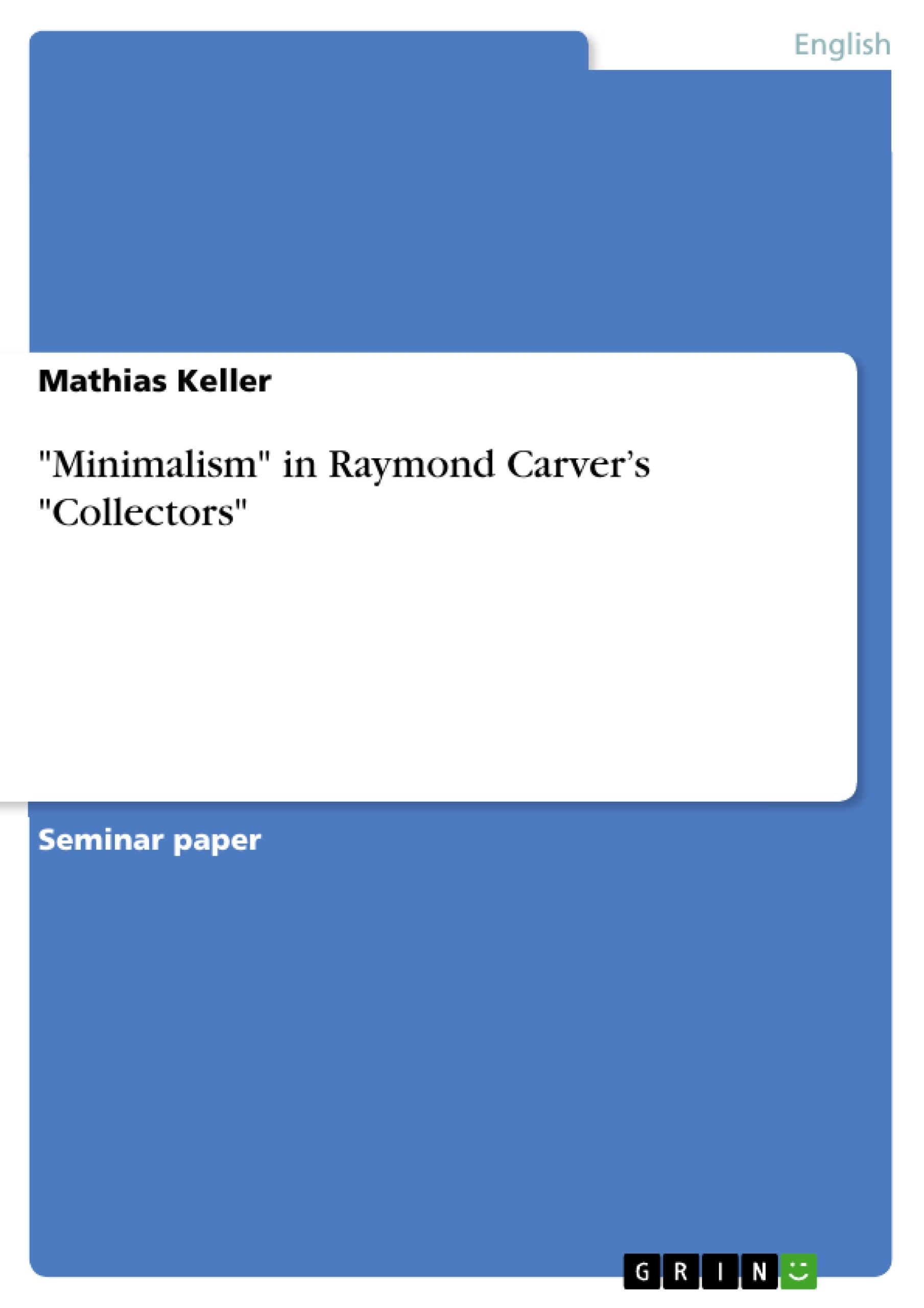In the seemingly simple low-rent tragedy "Collectors", Carver’s most minimalistic story, a salesman for vacuum cleaners enters the house and life of the I-narrator. A multitude of blanks and, moreover, unfamiliar events and actions contribute to a large extend to the high potential of anxiety of the story. In the following, I will first reveal the most significant blanks concerning the setting, the point of view and the two protagonists. By doing so, I will also attempt to fill them. Secondly, I will analyze what is unfamiliar in the story and how events and actions of the two characters amplify the, on the whole, uncanny situation. Finally, I will sum up the main findings of my analysis and evaluate them.
Inhaltsverzeichnis (Table of Contents)
- I. Introduction
- II. Setting and Point of View
- III. Characterization of the Protagonists
- A. The I-Narrator
- B. Aubrey Bell
- C. The Development of their Relation
- IV. Unfamiliar Actions and Events
- V. Conclusion
Zielsetzung und Themenschwerpunkte (Objectives and Key Themes)
This paper aims to analyze Raymond Carver's short story "Collectors," focusing on the techniques of "Minimalism" or "New Realism" employed in the narrative. The paper will explore the story's setting, point of view, and characterization, particularly examining the interplay between the narrator and the vacuum cleaner salesman, Aubrey Bell. The paper will also analyze the unfamiliar events and actions within the story, which contribute to a sense of anxiety and unease.
- The use of "Minimalism" or "New Realism" in contemporary American short fiction.
- The depiction of everyday life and the failure of personal relationships.
- The significance of blanks and omissions in the narrative.
- The creation of an atmosphere of anxiety and uncertainty through unfamiliar events and actions.
- The exploration of themes related to loneliness, alienation, and the breakdown of traditional values.
Zusammenfassung der Kapitel (Chapter Summaries)
The paper begins with an introduction to Raymond Carver's "Collectors" and its place within the "New Realism" movement. It introduces the story's central theme of the failure of personal relationships and the protagonist's struggle with loneliness and isolation.
The next section delves into the story's setting and point of view. The paper explores the ambiguity surrounding the time and location of the events, creating a sense of universality and suggesting a broader context beyond the immediate narrative. It also examines the first-person narration, highlighting its unique aspects and contrasting it with traditional narrative techniques.
The following section focuses on the characterization of the protagonists, the I-narrator and Aubrey Bell. It analyzes their individual traits, their relationship, and the development of their interaction throughout the story.
The paper continues with an analysis of the unfamiliar actions and events that unfold in the story. It examines how these unexpected occurrences contribute to the overall atmosphere of unease and uncertainty.
The final section, before the conclusion, will explore the story's themes and their significance in relation to the overall narrative.
Schlüsselwörter (Keywords)
Raymond Carver, "Collectors," Minimalism, New Realism, contemporary American short fiction, everyday life, personal relationships, loneliness, alienation, failure, setting, point of view, characterization, blanks, omissions, unfamiliar actions, anxiety, uncertainty, theme, analysis, interpretation.
- Quote paper
- Mathias Keller (Author), 2006, "Minimalism" in Raymond Carver’s "Collectors", Munich, GRIN Verlag, https://www.grin.com/document/67509



